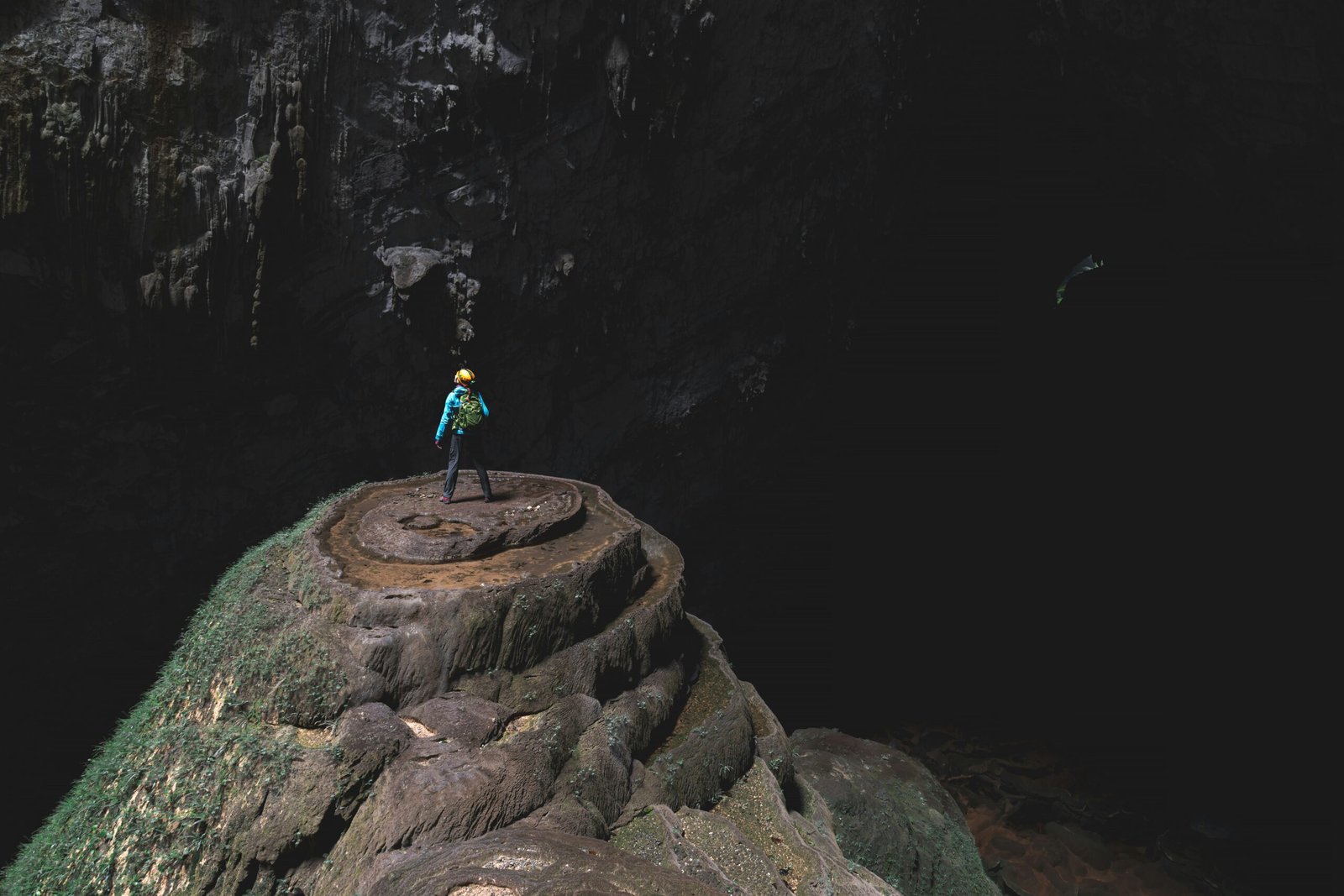
Sơn Đoòng Cave is located in Vietnam’s Phong Nha-Kẻ Bàng National Park in Quảng Bình Province. It is the largest cave in the world. Local farmer Hồ Khanh discovered it in 1991, but British cavers, led by Howard Limbert, explored it in 2009. Since then, Sơn Đoòng has amazed people worldwide with its massive size and unique geological features. This extraordinary cave is not only a natural wonder but also a crucial part of Vietnam’s heritage.

Geographical and Geological Significance
Sơn Đoòng Cave is part of a large network of over 150 caves in Vietnam’s Annamite Mountains. It stretches more than 5 kilometres long, with some sections reaching 200 meters high and 150 meters wide. The cave was formed 2–5 million years ago when river water slowly eroded the limestone under a mountain. Over time, this created the enormous chambers and passages that make Sơn Đoòng so unique.
Inside the cave, explorers have found an incredible variety of geological formations. Huge stalagmites and stalactites, some up to 80 meters tall, decorate the cave. These formations were created by mineral-rich water dripping from the cave ceiling over millions of years. Additionally, the cave features rimstone pools, also known as gours, formed by calcite deposits on the cave floor. One of the most remarkable features of Sơn Đoòng is its large cave pearls, which are as big as baseballs.
The cave’s most famous chamber, “Watch Out for Dinosaurs,” is so vast it could fit a New York City block. This chamber alone makes Sơn Đoòng a must-see destination for anyone fascinated by nature’s wonders.



Photo by Andrew Svk
A Unique Ecosystem
Sơn Đoòng Cave also hosts a unique ecosystem, thriving in its isolated environment. Unlike most caves, Sơn Đoòng receives significant natural light, which has allowed a jungle to grow inside. This jungle, known as the “Garden of Edam,” is home to various plant species. Some of these plants may exist only in this cave, making it a rare and special environment.
The cave also supports a diverse range of animals, including bats, swiftlets, and unique species of fish and insects. These creatures have adapted to the cave’s dark, underground world, making Sơn Đoòng an ideal place to study evolution. The cave’s isolation has allowed researchers to observe these species in a nearly untouched environment.
Furthermore, Sơn Đoòng even has its own weather system. Temperature differences between the cave’s interior and the outside world cause clouds to form inside. This natural phenomenon adds to the cave’s mysterious and otherworldly atmosphere.


Tourism and Conservation
Since Sơn Đoòng Cave opened to the public in 2013, it has become a major tourist attraction. Adventurers from around the globe are drawn to its immense size and beauty. Oxalis Adventure Tours, the only company allowed to operate tours, offers guided expeditions into the cave. These tours include jungle trekking, river crossings, and deep cave exploration, providing an unforgettable experience.
However, because the cave’s ecosystem is delicate, strict conservation measures are essential. The Vietnamese government, conservationists, and Oxalis have worked together to protect Sơn Đoòng’s natural condition. Tour groups are kept small to reduce the impact on the environment. Additionally, visitors must follow strict guidelines to minimize any damage to the cave. These efforts are crucial in preserving Sơn Đoòng for future generations while still allowing people to enjoy its natural beauty.


Photo by Andrew Svk


Sơn Đoòng in Popular Culture
Sơn Đoòng Cave’s breathtaking beauty has also caught the attention of filmmakers and musicians. The cave served as a filming location for the 2015 movie Pan, which reimagined the classic Peter Pan story. In the movie, Sơn Đoòng Cave appears as a part of the mystical and magical world of Neverland. Its otherworldly atmosphere and grand chambers made it an ideal setting for a fantasy film.
Moreover, the cave was featured in the music video “Alone, Pt. II” by Alan Walker and Ava Max. This music video highlights Sơn Đoòng’s stunning interior, showcasing its vast chambers and unique natural features. These appearances in film and music have brought Sơn Đoòng even more international recognition, showcasing its beauty to audiences worldwide.
Conclusion
Sơn Đoòng Cave is not only a natural marvel but also an important part of Vietnam’s heritage. Its enormous size, unique ecosystem, and stunning geological formations make it a must-see destination for nature lovers. Ongoing conservation efforts are vital to protect this incredible site and ensure it remains a source of wonder. As we explore Sơn Đoòng, we must remember the importance of balancing nature and human activity. Protecting sites like this is crucial, not just for tourism, but for preserving the natural wonders that make our world so remarkable. Sơn Đoòng Cave is a testament to the incredible power of nature and the importance of conservation.








